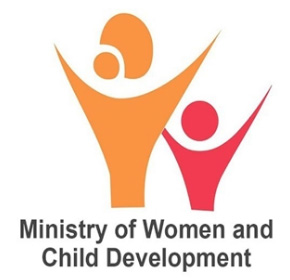Bhubaneswar: In order to maximize nutritional outcomes, the Government of India has released fund to the tune of Rs 2698.70 crore to the State Government under the Anganwadi Services (erstwhile ICDS), Scheme in the past three financial years.
According to official sources, the Centre has released Rs 846.52 crore during the financial year 2020-21 under the scheme while Rs 936.59 crore was released in 2021-22 and Rs 915.59 crore during the last financial year.
The Anganwadi Services Scheme aimed to address the challenges of malnutrition in children, adolescent girls, pregnant women and lactating mothers through a strategic shift in nutrition content and delivery and by creation of a convergent eco-system to develop and promote practices that nurture health, wellness and immunity. The Mission is being implemented throughout the country, including the State of Odisha.
Similarly, the Ministry of Women and Child Development has released Rs 128.93 crore to the State under Poshan 2.0 scheme during 2021-22 and 2022-23.
Under Poshan 2.0, focus is on diet diversity, food fortification, leveraging traditional systems of knowledge and popularizing use of millets. Nutrition awareness strategies under Poshan 2.0 aim to develop sustainable health and well-being through regional meal plans to bridge dietary gaps, sources said.
Further, greater emphasis is being given on the use of millets for preparation of Hot Cooked Meal and take home rations (not raw ration) at Anganwadi centres for Pregnant Women, Lactating Mothers and Children below 6 years of age, as millets have high nutrient content that can address anemia and other micro-nutrient deficiencies in women and children. Under the Supplementary Nutrition Programme of Mission Poshan 2.0, only fortified rice is being allocated to States by the Centre.
Further, the State Government has received a Central grant of only Rs 9.08 crore from the Centre under Mission Saksham Anganwadi in the past three years.
Under the Mission Saksham Anganwadi and Poshan 2.0 guidelines, 2 lakh Anganwadi Centres (AWCs) @ 40,000 AWCs per year shall be strengthened, upgraded across the country as Saksham Anganwadis for improving nutrition delivery including Poshan Vatikas upto 2025-26.
In 2022-23, 41,192 AWCs have been approved for upgradation with provision for LEDs and smart learning and teaching aids. In FY 2022-23, 6000 Saksham Anganwadi have been approved for upgradation in the State, they said.
Keeping in view the importance of nutrition and Early Childhood Care and Education (ECCE) services delivery, the Centre has decided to upgrade all Mini-Anganwadi Centres to main/regular Anganwadi Centres with the availability of an Anganwadi Helper. As many as 2836 Mini- Anganwadi have been approved in the State of Odisha for upgradation into Main Anganwadi Centre.
For construction of AWC buildings across the country under Mahatma Gandhi National Rural Employment Guarantee Scheme (MGNREGS) in convergence with Anganwadi Services (now known Saksham Anganwadi and POSHAN 2.0 Scheme), construction cost has been revised from Rs.7 lakh to Rs.12 lakh per unit under the revised Scheme – Poshan 2.0.
Under Swachhta Action Plan, Rs.10,000 per AWC was provided for drinking water facilities and Rs.12,000 per AWC for toilet facilities, which has now been revised to Rs.17,000 per AWC and Rs.36,000 per AWC respectively.
Further, from time to time States/UTs are being advised to utilise funds allocated under various components of Anganwadi Services as per the cost norms for better implementation of the scheme.
Moreover, under Poshan 2.0, for efficient service delivery and monitoring of the Anganwadi services, the Anganwadi workers (AWWs) have been technologically empowered with the provision of smartphones procured through Government e-Market (GeM).
Internet connectivity charges for AWWs are provided @Rs 2000 per annum per AWW. These frontline functionaries render their services in rural, urban, tribal and hilly areas of the country.
Poshan Tracker digitizes physical registers used by Anganwadi workers. This saves the time of AWWs and AWHs, and improves the quality of their work while simultaneously allowing them real-time monitoring. The Anganwadi Workers periodically measure height and weight of children upto the age of 6 years and upload that data in the application


